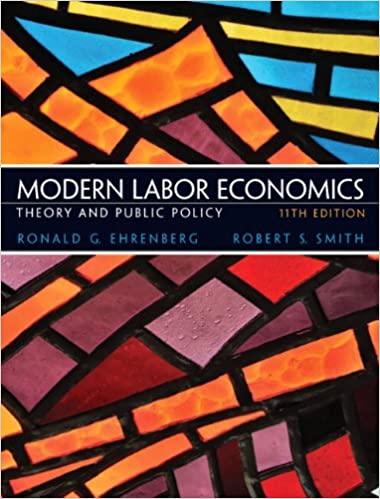Suppose a single parent can work up to 16 hours per day at a wage rate of
Question:
Suppose a single parent can work up to 16 hours per day at a wage rate of $10 per hour. Various income maintenance programs have been developed to assure a minimum level of income for low-income families, such as AFDC (see Problem 2).
One of the problems with AFDC is that benefits were reduced by $1 for every dollar earned. An alternative income maintenance program is Temporary Assistance for Needy Families (TANF), which also offers a no-work benefit but has a smaller reduction in wages for every dollar earned. A simplified version of this type of program is one that would give this single parent a $40 (no-work) grant accompanied by a benefit reduction of 75 cents for every dollar earned.
a. Draw the daily budget constraint without any program participation for the single parent described above.
b. On the same graph, draw the daily budget constraint under TANF for the single parent described above. At what level of income does the subsidy end?
How many hours of work would this be? Discuss the effect of program participation on work incentives.
c. On the same graph, draw the daily budget constraint under AFDC for the single parent described above (Problem 2).
d. Compare the effect of the TANF program on work incentives compared to the AFDC program.
Step by Step Answer:

Modern Labor Economics Theory And Public Policy
ISBN: 9780132540643
11th Edition
Authors: Ronald Ehrenberg, Robert Smith





